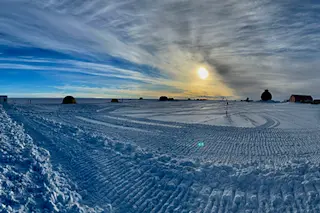Some Adélie penguin communities are holding strong despite a trend of decline. (Credit: Louisiana State University, Courtesy Michael Polito) What’s black, white and always dressed to impress? A penguin! And scientists, with the help of drones and poop stains, recently discovered a mega-colony of these dapper animals. The Adélie penguin population in the Antarctic continues to decline, particularly on the west side of the Antarctic Peninsula, which some studies link to climate change. However, little is known about the population residing on the east side of the continent. After analyzing old satellite images, researchers saw signs of penguin guano that suggested there may be more penguins in the area than initially thought. A March study released in Scientific Reports shows the Adélie penguin colonies on the east side of the Antarctic Peninsula are holding strong, after researchers spotted never-before-seen communities.
Using imagery from satellites, drones and ground surveys, the team ...














